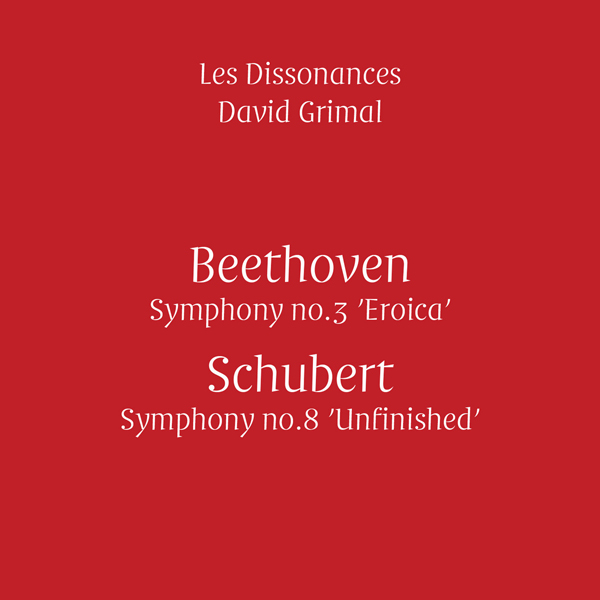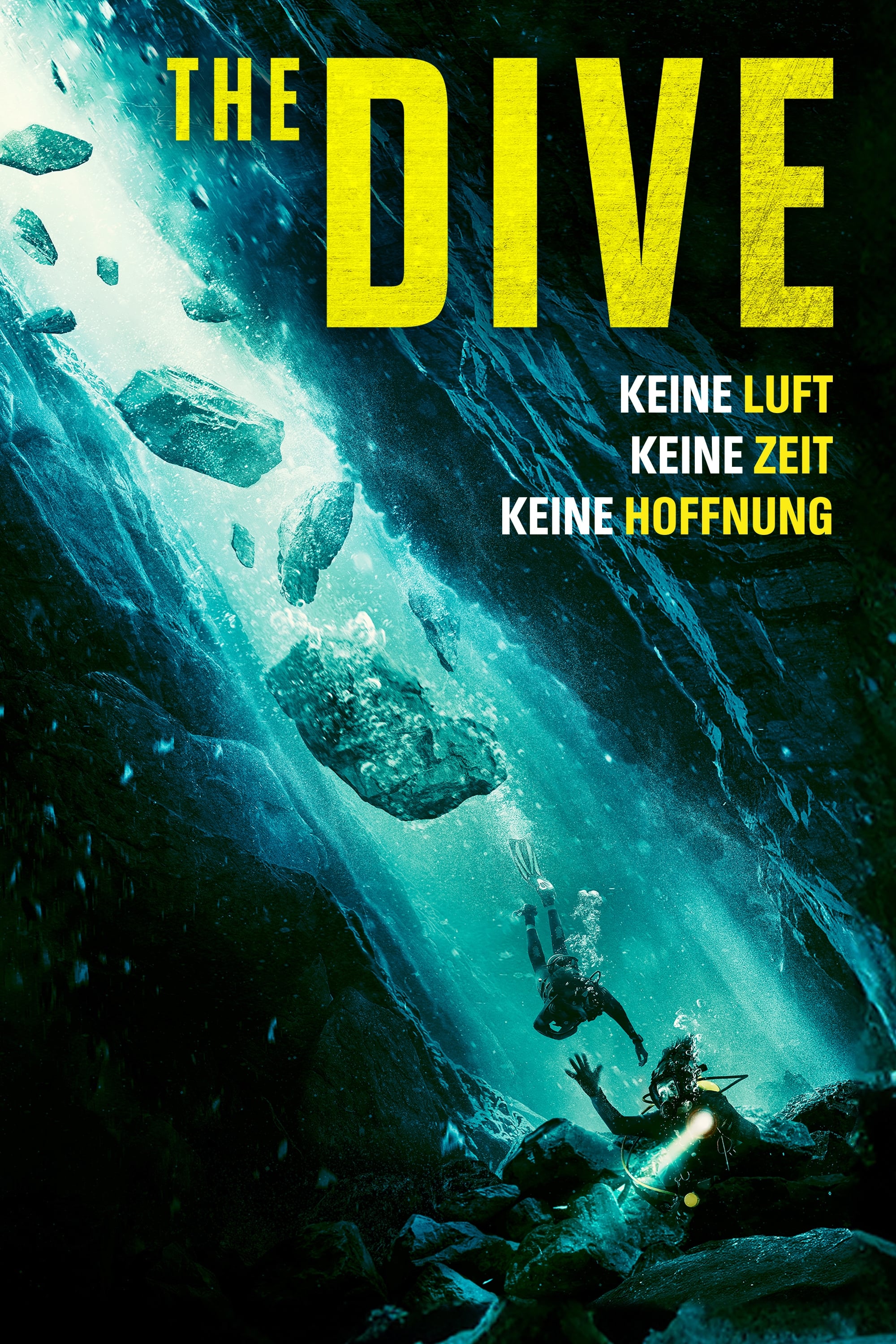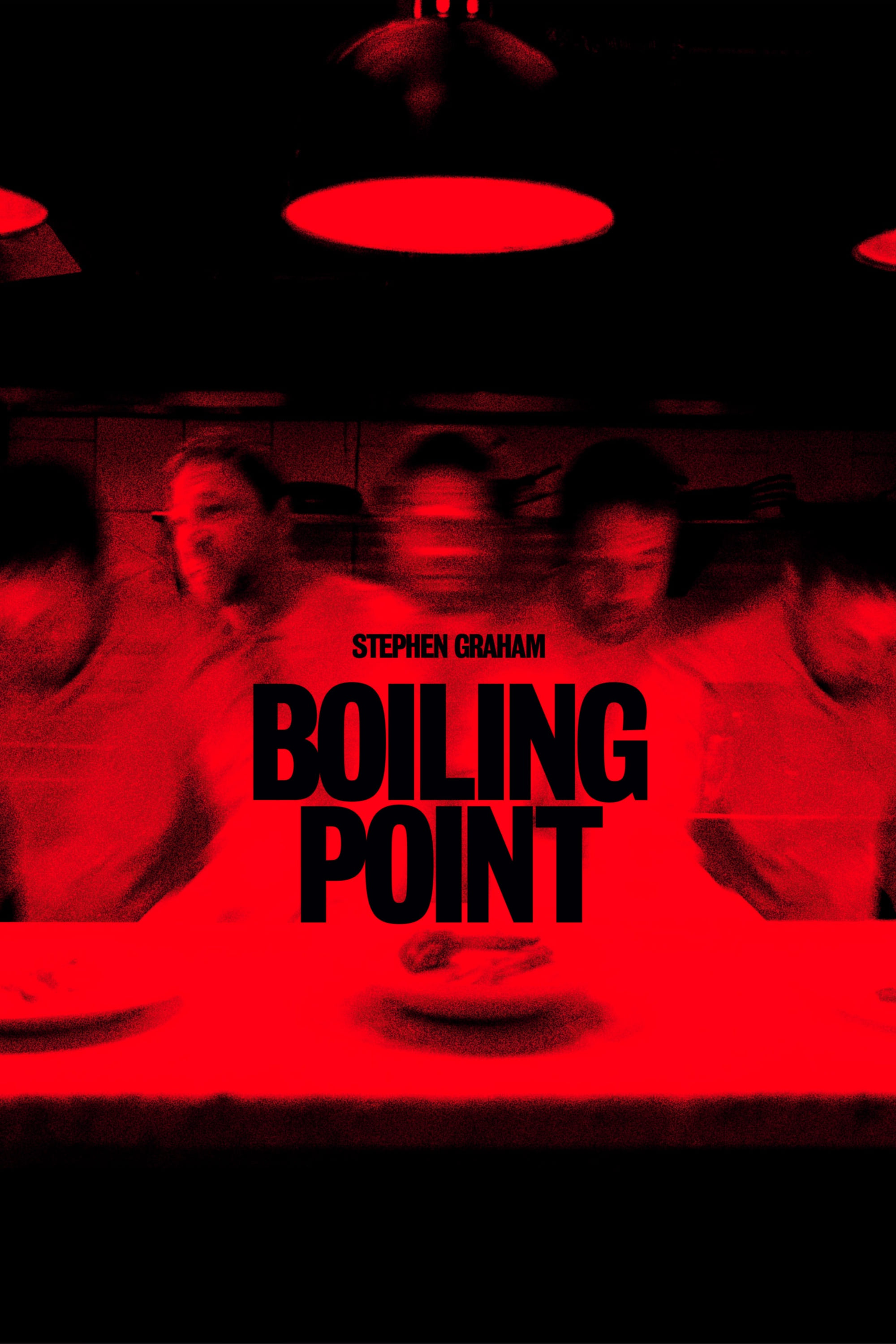
Beethoven: Symphony No. 3; Schubert: Symphony No. 8 – Les Dissonances, David Grimal (2016)
FLAC (tracks) 24-bit/48 kHz | Time – 01:09:28 minutes | 679 MB | Genre: Classical
Studio Masters, Official Digital Download – Source: Qobuz | Front Cover | © Dissonances Records
Recorded: Beethoven – Opéra de Dijon, 20 December 2012; Schubert – Cité de la musique, Philharmonie de Paris, 19 December 2013
Symphony no.3 in E flat major op.55, ’Eroica’: During the summer of 1802 in Heiligenstadt, Beethoven sketched, among other works, his Third Symphony, the composition of which took him a year. On 26 August 1804, he wrote to his publisher Härtel to announce the dispatch of ‘a new grand symphony’: ‘The title of the symphony is really Bonaparte . . . – I think that it will interest the musical public.’ Beethoven had long passionately admired the Consul Bonaparte, but he was to hate the Emperor Napoleon I equally passionately when he learnt of his coronation on 2 December 1804. His pupil Ferdinand Ries portrays the scene: ‘He ew into a rage and cried out: “He too is nothing but an ordinary man!” . . . He went to the table, seized the title page from the top, tore it up completely and threw [the score] on the floor.’ And so the work became a ‘Heroic Symphony to celebrate the memory of a great man’, acquiring the subtitle ‘Eroica’ for posterity.
At the first performance on 7 April 1805, the work impressed the audience with its extraordinary dimensions for the time in terms of duration and breadth, especially the opening Allegro con brio in sonata form, the recapitulation of which is announced by a dramatic dissonance between the strings and the horns. The Marcia funebre widens the palette for the expression of feeling, from the affliction of the theme in the minor mode to the brighter mood generated by the modulations into the major. The Finale is no longer content to play the role of a brief, lively conclusion, but leads us through a rich itinerary of variations on a theme that Beethoven took from his ballet Die Geschöpfe des Prometheus (The Creatures of Prometheus). Yet the first listeners rejected the work, which they deemed too long and muddled, reproaching it for the very thing that has subsequently gained it its renown: for disturbing the ambient Classicism and throwing the gates of the Romantic era wide open.
Symphony no.8 in B minor D759, ’Unfinished’: In 1823, Franz Schubert (1797 – 1828) received the Diploma of Honour from the Styrian Music Society of Graz. In return, he sent his friend Josef Hüttenbrenner, a member of the society, a new work dedicated to it and dated 30 October 1822. Passing from Josef’s hands to those of his brother Anselm, the manuscript lay forgotten in a bottom drawer until it resurfaced in March 1860. Josef Hüttenbrenner mentioned in a letter to the musician Johann Herbeck that his brother ‘possessed a treasure in Schubert’s in B minor symphony, which we consider the equal of the great C major Symphony, his instrumental swansong, and of any of Beethoven’s symphonies – only it is unfinished’. It is to Herbeck that we owe the resurrection of the work and its first performance in 1865.
Only two movements of this symphony have come down to us completely orchestrated. The scherzo is known in its entirety thanks to a piano sketch of the symphony. All that has survived of its orchestration are the nine bars found in the Graz manuscript, between the end of the Andante and four blank pages, and the eleven additional bars rediscovered in 1960 by the musicologist Christa Landon. These twenty bars break o abruptly; they are performed in the present recording by Les Dissonances. The piano sketch reveals that Schubert had planned to write at least the complete scherzo and the start of a trio. But we have no idea of the reasons that prompted him to complete the orchestration of the two first movements only.
It is very likely that the intimidating shadow of Beethoven bulked large in his preoccupations. Aged twenty- five when he wrote the symphony, Schubert was then a fast-rising composer who fully intended to blaze new trails. Though he set out to experiment with large-scale form, the only significant achievement of this kind he completed in the symphonic genre was the ‘Great C major’ Symphony (no.9). But, thanks to this approach, he pushed back the frontiers of Classical forms in his quartets and piano sonatas. And that same quest is the driving force behind the ‘Unfinished’ Symphony, which also offers us the magical privilege of glancing through the sketchbook of a genius. The ambition and maturity of the works of this period left behind by a composer who died aged just thirty-one allow us to imagine what his creative trajectory and his legacy might have been had he lived ten, twenty, thirty years longer, opening the way for Johannes Brahms and Anton Bruckner.
Tracklist:
Ludwig van Beethoven (1770 – 1827)
Symphony No. 3 in E Flat Major, Op. 55 “Eroica”
1. I. Allegro con brio 16:16
2. II. Marcia funebre – Adagio assai 14:14
3. III. Scherzo – Allegro vivace 05:55
4. IV. Finale – Allegro molto 11:09
Franz Schubert (1797 – 1828)
Symphony No. 8 in B Minor, D. 759 “Unfinished”
5. I. Allegro moderato 12:52
6. II. Andante con moto 08:00
7. III. Scherzo (sketches) 01:02
Personnel:
David Grimal, conductor & violin
Les Dissonances
Download:
mqs.link_BeethvenSymphnyN.3SchubertSymphnyN.8LesDissnancesDavidGrimal20164824.rar










![David Grimal - Bach: Sonatas & Partitas (2023) [FLAC 24bit/88,2kHz] David Grimal - Bach: Sonatas & Partitas (2023) [FLAC 24bit/88,2kHz]](https://imghd.xyz/images/2023/04/02/djtq4ixpldlpa_600.jpg)
![Itzhak Perlman - The Complete Warner Recordings 1972-1980 (2015) [FLAC 24bit/96kHz] Itzhak Perlman - The Complete Warner Recordings 1972-1980 (2015) [FLAC 24bit/96kHz]](https://getimg.link/images/imgimgimg/uploads/2019/12/IpmBmeR.jpg)
![Zuzana Ruzickova - J.S. Bach: The Complete Keyboard Works (2016) [FLAC 24bit/96kHz] Zuzana Ruzickova - J.S. Bach: The Complete Keyboard Works (2016) [FLAC 24bit/96kHz]](https://getimg.link/images/imgimgimg/uploads/2018/09/r94XYtX.jpg)
![Glenn Gould - The Complete Columbia Album Collection (2015 Remastered Edition) [Qobuz FLAC 24bit/44,1kHz] Glenn Gould - The Complete Columbia Album Collection (2015 Remastered Edition) [Qobuz FLAC 24bit/44,1kHz]](https://getimg.link/images/imgimgimg/uploads/2017/07/2bHwfbA.jpg)
![Les Dissonances, David Grimal - Brahms: Symphony No. 4 & Violin Concerto (2014) [Qobuz FLAC 24bit/48kHz] Les Dissonances, David Grimal - Brahms: Symphony No. 4 & Violin Concerto (2014) [Qobuz FLAC 24bit/48kHz]](https://getimg.link/images/imgimgimg/uploads/2018/10/0bXDOXC.jpg)
![Les Dissonances & David Grimal - Chausson, Ravel, Enescu (2021) [FLAC 24bit/48kHz] Les Dissonances & David Grimal - Chausson, Ravel, Enescu (2021) [FLAC 24bit/48kHz]](https://getimg.link/images/imgimgimg/uploads/2021/11/2MSVemJ.jpg)
![Emanuel Ax - Beethoven: Piano Sonata No. 21, Op. 53 & Variations and Fugue in E-Flat Major, Op. 35 (1977/2018) [FLAC 24bit/96kHz] Emanuel Ax - Beethoven: Piano Sonata No. 21, Op. 53 & Variations and Fugue in E-Flat Major, Op. 35 (1977/2018) [FLAC 24bit/96kHz]](https://getimg.link/images/imgimgimg/uploads/2019/01/As7pDHu.jpg)
![David Grimal - Poulenc, Stravinsky, Prokofiev: Violin sonatas (2023) [FLAC 24bit/96kHz] David Grimal - Poulenc, Stravinsky, Prokofiev: Violin sonatas (2023) [FLAC 24bit/96kHz]](https://imghd.xyz/images/2023/04/02/fka4i3wff8e5a_600.jpg)
![Wolfgang Amadeus Mozart - The 5 Violin Concertos - David Grimal, Les Dissonances (2015) [HighResAudio FLAC 24bit/44,1kHz] Wolfgang Amadeus Mozart - The 5 Violin Concertos - David Grimal, Les Dissonances (2015) [HighResAudio FLAC 24bit/44,1kHz]](https://getimg.link/images/imgimgimg/uploads/2017/03/ptdaw6I.jpg)
![Ronald Brautigam - Beethoven: The Complete Piano Sonatas (2014) [eClassical FLAC 24bit/44,1/88,2kHz] Ronald Brautigam - Beethoven: The Complete Piano Sonatas (2014) [eClassical FLAC 24bit/44,1/88,2kHz]](https://getimg.link/images/imgimgimg/uploads/2016/10/pzFKc5g.jpg)
![Ludwig van Beethoven - Violin Concerto & 7th Symphony - Les Dissonances, David Grimal (2010) [Qobuz FLAC 24bit/96kHz] Ludwig van Beethoven - Violin Concerto & 7th Symphony - Les Dissonances, David Grimal (2010) [Qobuz FLAC 24bit/96kHz]](https://getimg.link/images/imgimgimg/uploads/2017/03/WqrigaR.jpg)
![David Grimal & Les Dissonances - Beethoven: Violin Concerto & 7th Symphony (2010) [FLAC 24bit/96kHz] David Grimal & Les Dissonances - Beethoven: Violin Concerto & 7th Symphony (2010) [FLAC 24bit/96kHz]](https://getimg.link/images/imgimgimg/uploads/2017/10/rEIiaP0.jpg)
![Mari Kodama - Beethoven: The Complete Piano Sonatas (2014) [HDTracks 24bit/96kHz] Mari Kodama - Beethoven: The Complete Piano Sonatas (2014) [HDTracks 24bit/96kHz]](https://getimg.link/images/imgimgimg/uploads/2017/03/PzPMGuc.jpg)
![Leonard Bernstein - Serenade for Solo Violin; Alfred Schnittke - Concerto Grosso No. 1, Moz-art a la Haydn - Hans-Peter Hofmann, Les Dissonances, David Grimal (2016) [HighResAudio FLAC 24bit/88,2kHz] Leonard Bernstein - Serenade for Solo Violin; Alfred Schnittke - Concerto Grosso No. 1, Moz-art a la Haydn - Hans-Peter Hofmann, Les Dissonances, David Grimal (2016) [HighResAudio FLAC 24bit/88,2kHz]](https://getimg.link/images/imgimgimg/uploads/2017/03/jx7RMCS.jpg)
![John Nelson, Joyce DiDonato, Marie-Nicole Lemieux, Michael Spyres - Berlioz: Les Troyens (2017) [Qobuz FLAC 24bit/96kHz] John Nelson, Joyce DiDonato, Marie-Nicole Lemieux, Michael Spyres - Berlioz: Les Troyens (2017) [Qobuz FLAC 24bit/96kHz]](https://getimg.link/images/imgimgimg/uploads/2018/06/dwNLNVR.jpg)